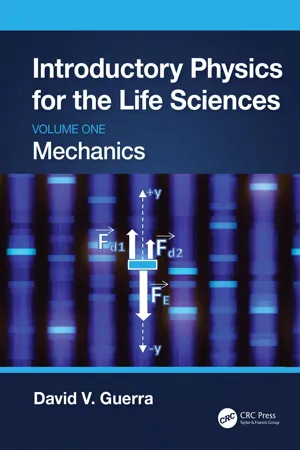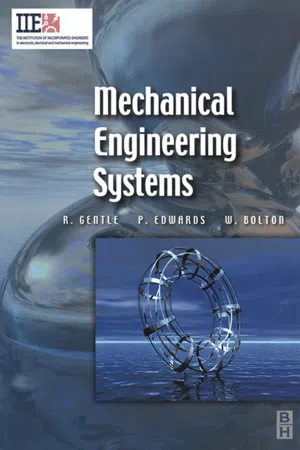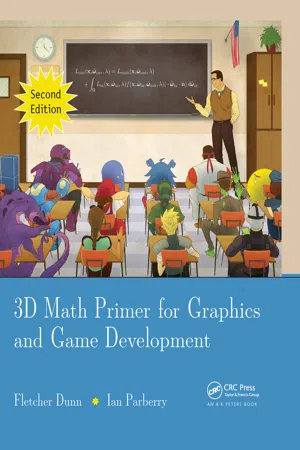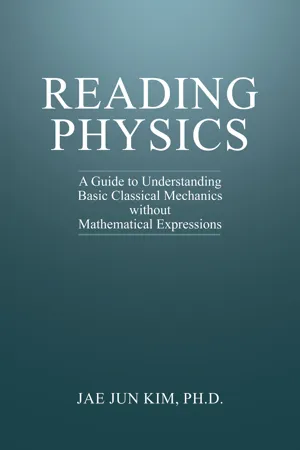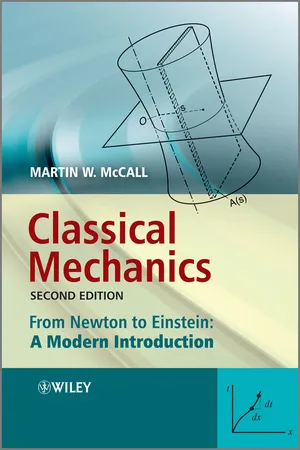Physics
Rotational Dynamics
Rotational dynamics is the study of the motion of objects that rotate around an axis. It involves understanding the forces and torques that cause rotational motion, as well as the resulting angular acceleration and velocity. Key concepts in rotational dynamics include moment of inertia, angular momentum, and the relationship between torque and angular acceleration, as described by Newton's second law for rotation.
Written by Perlego with AI-assistance
Related key terms
9 Key excerpts on "Rotational Dynamics"
- eBook - ePub
Engineering Science
For Foundation Degree and Higher National
- Mike Tooley, Lloyd Dingle(Authors)
- 2013(Publication Date)
- Routledge(Publisher)
Part II Dynamics In this part of the book we consider the dynamic behaviour of bodies, that is, the motion of bodies under the action of forces. The study of dynamics is normally split into two major fields, kinematics, the study of the motion of bodies without reference to the forces that cause the motion, and kinetics, where the motion of bodies is considered in relationship to the forces producing it. With the exception of the study of mechanisms in Chapter 9, we will not, in this short study of dynamics, differentiate a great deal between these two areas, rather concentrating on the macroscopic effects of forces and resulting motions in dynamic engineering systems and machinery. We start our study of dynamics in Chapter 8 by looking at a number of fundamental concepts concerning linear and angular motion and the forces that create such motion, including a review of Newton’s laws. We then consider momentum and inertia, together with the nature and effects of friction that acts on linear and angular motion machines and systems. Next, mechanical work and energy transfer are considered and their relationship to linear and angular motion systems is explored. Finally in Chapter 8, as a prelude to rotating machinery in Chapter 10, we take a brief look at circular motion and the forces created by such motion. In Chapter 9, we first consider the motion of one or two single and multilink mechanisms. In particular, we look at the nature of the relative velocities and accelerations of these mechanisms, together with the power and efficiencies of particular engineering machines that utilise such mechanisms. Then, very briefly, we consider the geometry and output motions of various types of cams. We will then look at a number of gyroscopic motion parameters, in particular gyroscopic rigidity, precession and reaction torque - David V. Guerra(Author)
- 2023(Publication Date)
- CRC Press(Publisher)
13 Rotational Motion
DOI: 10.1201/9781003308065-1313.1 Introduction
Rotational motion is the motion of an object spinning around an axis that passes through the object itself. This is to be contrasted with translational motion, which is the motion of an object moving through space in a straight or curved path without rotation. As demonstrated in Figure 13.1 , a block sliding down an incline moves with only linear motion defined by a displacement, a velocity, and an acceleration. A disk rotating about a fixed axis moves with only rotational motion, but a ball rolling down an incline experiences both rotational and linear motion.FIGURE 13.1 Examples of different types of motion.As demonstrated in Chapter 12 , when an object is traveling in a circular path, the concepts of translation kinematics are commonly applied to the analysis, but sometimes the concepts of rotational motion, period, frequency, and angular frequency can be applied. So, circular motion provides a transition between the language of translational and rotational motion, which is formalized in this chapter. In addition, Rotational Dynamics will formalize the connection between the net rotational force, or net torque, on an object and the angular acceleration of the object.- Chapter question: There are bacteria that employ a rotating flagellum, tails that look a bit like a corkscrew, to propel themselves forward. In normal situations, these propulsion systems work well to move these bacteria forward through water. On the other hand, when a drop of water containing these bacteria is placed on a microscope slide, the bacteria begin to move in approximately circular paths at fairly constant speeds (Figure 13.2 ).
FIGURE 13.2
- eBook - ePub
- Richard Gentle, Peter Edwards, William Bolton(Authors)
- 2001(Publication Date)
- Newnes(Publisher)
In the second part of this chapter we consider the situation where there is a resultant force or moment on a body and so it starts to move or rotate. This topic is known as dynamics and the situation is described by Newton’s laws of motion. Once moving forces are involved, we need to look at the mechanical work that is being performed and so the chapter goes on to describe work, power and efficiency. Newton’s original work in this area of dynamics was concerned with something called momentum and so this idea is also pursued here, covering the principle of conservation of momentum. The chapter extends Newton’s laws and the principle of conservation of momentum to rotary motion, and includes a brief description of d’Alembert’s principle which allows a dynamic problem to be converted into a static problem.Objectives By the end of this chapter the reader should be able to:• define displacement, speed, velocity and acceleration; • use velocity–time graphs and the equations of motion to analyse linear and rotary movement; • understand motion due to gravity and the formation of trajectories; • calculate the velocity of one moving object relative to another; • define the relationships between mass, weight, acceleration and force; • apply Newton’s laws of motion to linear and rotary motion; • calculate mechanical work, power and efficiency; • understand the principle of conservation of momentum; • understand d’Alembert’s principle.4.1 Introduction to kinematics
Kinematics is the name given to the study of movement where we do not need to consider the forces that are causing the movement. Usually this is because some aspect of the motion has been specified. A good example of this is the motion of a passenger lift where the maximum acceleration and deceleration that can be applied during the starting and stopping phases are limited by what is safe and comfortable for the passengers. If we know what value this acceleration needs to be set at, then kinematics will allow a design engineer to calculate such things as the time and the distance that it will take the lift to reach its maximum speed. - eBook - ePub
- John Chiasson(Author)
- 2022(Publication Date)
- Wiley(Publisher)
5 Rigid Body Rotational Dynamics 5.1 Moment of Inertia The equation s of motion of a rigid body that is constrained to rotate about a fixed axis are reviewed here briefly. Consider the cylinder shown in Figure 5.1. Figure 5.1 Cylinder constrained to rotate about a fixed axis. The approach here is to obtain the equations of motion of the cylinder by first obtaining an expression for its kinetic energy. To do so, denote the angular speed of the cylinder by and the mass density of the material making up the cylinder by. Then consider the cylinder to be made up of a large number of small pieces of material where the th piece has mass This is illustrated in Figure 5.2. Each piece of mass is rotating at the same angular speed so that the linear speed of is where is the distance of from the axis of rotation. The kinetic energy of is given by Figure 5.2 Cylinder is considered to be made up of small masses The total kinetic energy is then Dividing the cylinder into f iner and finer pieces so that and, the sum becomes the integral The quantity is called the moment of inertia. Using the kinetic energy of the cylinder may now be written as Taking the axle radius to be zero, the moment of inertia of the cylinder (assuming the mass density is constant) is computed to be where is the total mass of the cylinder. 5.2 Newton's Law of Rotational Motion The kinetic energy is now used to derive a relationship between torque and angular acceleration. Recall from elementary mechanics that the work done on a mass by an external force equals the change in its kinetic energy - No longer available |Learn more
- Robert A. Pelcovits, Joshua Farkas(Authors)
- 2023(Publication Date)
- Barrons Educational Services(Publisher)
6Rotation I: Kinematics, Force, Work, and Energy
Learning Objectives
In this chapter, you will learn:Definitions of angular position, velocity, and accelerationRelationships between angular and translational kinematic quantitiesRotational kinetic energy; rotational inertiaTorqueRotational analog of Newton’s second lawWork and power in rotational motionThis chapter explores the rotation of rigid bodies about fixed axes. Newton’s laws are valid for rotational motion just as they apply to linear motion. However, it will help to recast kinematics and Newton’s second law into a more useful form for dealing with rotational motion.The Motivation for Developing New Parameters
When an object is undergoing pure translational motion, every particle in the object has the same displacement, velocity, and acceleration. When a rigid body is rotating about an axis, every particle in the object moves in a circular path about the axis, but the particles can have different velocities and accelerations (e.g., particles farther away from the axis move faster), making it impossible to assign a single velocity or acceleration to the object. However, every particle rotates through the same angle in a given time interval, thus sharing a common angular displacement (Δθ), angular velocity (dθ/dt), and angular acceleration (d2 θ/dt2 ). Because these angular quantities apply to every particle in the object, they are useful in characterizing rotational motion.Angular Position, θ
1.The angle θ does not merely refer to an object’s current position relative to some reference position (i.e., it does not “reset” after every rotation). For example, if we define a wheel’s angle to be θ = 0 and then rotate the wheel three times counterclockwise, its angular position is θ = 6π, not θ - eBook - ePub
- Fletcher Dunn, Ian Parberry(Authors)
- 2011(Publication Date)
- A K Peters/CRC Press(Publisher)
In the absence of external torque, angular momentum is conserved.12.5.3 3D Rotational Dynamics
Now let’s extend the basic principles developed in Section 12.5.2 into three dimensions. First, let’s review the 3D rotational kinematics quantities. The single angle θ is replaced by a rotation tensor of some kind, with a rotation matrix R or a quaternion q being the most common methods of describing orientation in general rigid body simulations. The angular velocity ω and acceleration α become vector quantities and get bolded as ω and α , respectively.To extend the dynamics principles into three dimensions, we start with torque. Not surprisingly, torque becomes a vector quantity denoted τ , and the direction of this vector indicates the axis about which the torque is tending to induce rotation. (Later we consider what happens if the object is already rotating about a different axis.) The formula for computing the torque for an applied force f and lever arm I is actually simpler in 3D than the corresponding 2D formula!Torque in Three Dimensionsτ = 1 × f .(12.29)Compare Equation (12.29) to τ = Fl sin ϕ (Equation (12.24)), and notice that the cross product has the magnitude and sin ϕ terms built in.Angular momentum likewise becomes a vector L , with a similar formula for its relation to the linear quantity:L = r × P .Orbital angular momentum of a particle in three dimensions with radial vector rCompare this to Equation (12.28).A reader who is paying attention might note that Equation (12.28) is only one of two equations we gave for angular momentum in the plane—the one we deemed to be more appropriate for orbital angular velocity of a particle—and wonder about the other formula, Equation (12.27), which was more appropriate for spin angular velocity. That formula was L = Jω , and to get its three-dimensional equivalent, we must understand how to extend J , the moment of inertia, into three dimensions. Luckily, the link between the two momentum equations is an excellent way to get this understanding. Let’s start by expanding L = r × P , with the goal of ending up with something that looks like L = Jω - eBook - ePub
- A. L. Stanford, J. M. Tanner(Authors)
- 2014(Publication Date)
- Academic Press(Publisher)
For example, if the rotation of a body in a problem takes place about a fixed axis, the problem involves pure rotation; we may then ignore any translational aspects of the rotating body. The kinetic energy of the body is then given by K = 1/2 I ω 2. If the system under consideration is a rigid body rotating about a fixed axis, any particle located at a distance r from the axis of rotation has translational displacement, tangential speed, and tangential acceleration related to its angular variables by s = r θ, v t = r ω, and a t = r α. If a rotating body in a problem is not rigid, that is, if the distances between particles that comprise the body change, the problem is probably one that utilizes the principle of conservation of angular momentum. Before we conclude that the angular momentum of a system is conserved, we must be certain that external forces produce no net torque on the system (the necessary condition for conservation of angular momentum). When angular momentum of a system is conserved, the equation I i ω i = I f ω f relates the angular velocities and moments of inertia of the system before (initially) and after (finally) the configuration has been changed to give the system a different moment of inertia. Rolling (or unwinding) bodies translate and rotate simultaneously. If they roll without slipping, the equations s = r θ, v t = r ω, and a t = r α relate the translational and rotational variables of points on or within the rolling body - eBook - ePub
Reading Physics
A Guide to Understanding Basic Classical Mechanics without Mathematical Expressions
- Jae J. Kim(Author)
- 2023(Publication Date)
- Universal Publishers(Publisher)
Remember: for all the physical quantities that we utilize to describe linear motion associated with an object, we have corresponding physical quantities in rotational motion. It is important to remember that. They just happen to look different, but they’re not that different in terms of analyzing motion.Problems:Day 36 Angular momentum and rotational energyRotational motion could be thought of as a combination of the linear motion. That means that the kinematics equation for rotational motion can be derived from the equations for linear motions. Think about why this could be so and write a paragraph on it.“It is not linear momentum, but we need angular momentum when describing a rotational motion. It is not a force but torque in a rotational motion. It is not energy associated with a linear motion, but kinetic energy associated with a rotational motion. Think about a ball rolling down a hill.”If you remember, utilizing linear momentum happened to be useful when studying linear motion; it stays the same unless an external force acts on a system. Just like that, angular momentum is very useful when describing rotational motion. The size of the total angular momentum in an isolated system stays the same unless an external entity acts on it. As described in a previous lesson, we do see similarities between quantities in linear and rotational motions.Linear momentum is defined as the mass of an object times the velocity of the object. So, it is a vector. But we have a slightly different situation for angular momentum. Since the angle does not have any physical dimension associated with, angular momentum cannot be defined the same way as linear momentum. Question: what do we need to do? Answer: We need to bring the dimension length back into the definition. For that reason, angular momentum is defined as the mass associated with an object times the cross-product of the velocity and the position vector associated with the object. Why is this important? Just like the linear momentum in linear motion, angular momentum is conserved in an isolated system. On top of that, some intrinsic properties associated with momentum in both type of motions have similarities, and we are going to go over them later. - eBook - ePub
Classical Mechanics
From Newton to Einstein: A Modern Introduction
- Martin W. McCall(Author)
- 2011(Publication Date)
- Wiley(Publisher)
Nevertheless, providing we keep these limitations in mind, the rigid body concept is very useful. We must not get carried away, though. You might think that if all the bodies respond to each other at the same time, then effectively the dynamical problem reduces to that of a single particle. This is not so. A force applied to the centre of mass of a rigid body does indeed cause the body as a whole to accelerate. However, an external force acting through any other point exerts a torque about the centre of mass that causes the body to spin (see Figure 8.1). The spinning motion maintains the spatial separations, as required for a rigid body, but has no analogue for single-particle systems. Nevertheless, the problem has been effectively reduced to describing the centre-of-mass motion and the twisting effect induced by external forces and torques. With respect to the potential complexity of a many-particle system, the rigid body constraint is very severe. Our aim in this chapter is to analyse the residual dynamics consistent with this constraint. Figure 8.1 A free rigid body translating and rotating in response to an external force. 8.2 Torque and Angular Momentum for Systems of Particles For a single particle we had (Equation (7.8)) G = d L / dt, and our first task is to generalise this to a system of particles. Figure 8.2 shows an arbitrary system, with as yet no rigid body constraint being applied. Forces acting on a particular particle are of two kinds. The external forces acting may be summed to give F ext 1, the total external force acting on particle 1, for example. Otherwise, there are the forces due to other particles in the system, where F 12 denotes the force on particle 1 due to particle 2. The total torque on particle 1 is given by (8.1) Similarly for mass 2: (8.2) Now calculate the total torque as G total = G 1 + G 2 + · · ·
Index pages curate the most relevant extracts from our library of academic textbooks. They’ve been created using an in-house natural language model (NLM), each adding context and meaning to key research topics.

